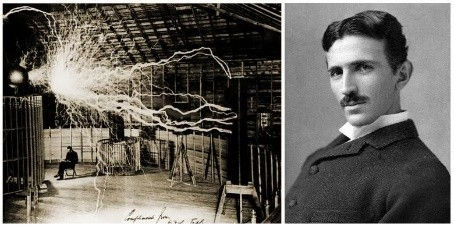A Classic Player: John Philip Sousa, 1854 - 1932
- Claiborne Ray
- Mar 21, 2023
- 3 min read
Updated: Apr 9, 2024
By C. CLAIBORNE RAY

The familiar image of John Philip Sousa as the March King, in full Marine or Navy uniform and leading a concert military band, is considerably at odds with his other persona, as the successful composer of more than a dozen operettas, many of them in the style of W.S. Gilbert and Arthur Sullivan. His most successful one, "El Capitan," made it to Broadway in 1896, before it had actually become the Theater District. Its New York debut was at the old Broadway Theater at 41st Street and Broadway, also the home of Edwin Booth's last "Hamlet," in 1891. The title role of El Capitan, Viceroy of Peru, was played by the very popular comic actor DeWolf Hopper, another Player. The show toured for four years before a New York revival, remained popular for years, and has had several modern productions.
Sousa's links with Gilbert and Sullivan started early. When their first smash hit, "H.M.S. Pinafore," made it to the United States in 1879 in the form of skeleton scores for piano and voices, Sousa was hired by the Amateur Opera Company of Philadelphia to make a full orchestration and conduct it. The version was one of the most successful of the American bootlegs, drawing the approval of Sullivan himself when he visited the New York production. Sousa later wrote the "Mikado March," incorporating themes from that G&S hit. His own "El Capitan" march did the same with themes from his operetta and is now better known than its source. Sousa's career as the March King is well known and was somewhat stiffly immortalized in "The Stars and Stripes Forever," the 1952 movie starring Clifton Webb. He studied many instruments and singing as a young child, and was enlisted by his trombonist father at 13 as an apprentice in the Marine Band to keep him from running away to join a circus band. After his apprenticeship ended at 21, he freelanced for a few years before rejoining the Marine Band. He was named conductor at the age of 26 and led the band for 12 years. After a farewell concert in 1892 at the White House, he then formed his own famous band, composing and conducting around the world for the rest of his life. Sousa became a Player in 1906. The Sousa Band had already established itself as one of the first stars of the recording industry, and his marches were popular music, heard along with Caruso, Hawaiian music, comedians, novelties and love songs in many American homes. Ironically, Sousa hated the records that made him famous, predicting that recording would destroy in-person music making. He usually left the conducting of his own band to others when the records were made. At the beginning of the First World War, he joined the Navy and led the band at the Great Lakes Naval Training Station. He often wore a naval uniform for the rest of his performing career. In 1879, Sousa married Jane van Middlesworth Bellis, whom he had met not long before while rehearsing "H.M.S. Pinafore." They had three children. In later life, Sousa lived in Sands Point, Long Island, an elite suburb of New York. He was an active clubman, joining many military clubs, the Masons, the Lambs, the Salmagundi Club and the New York Athletic Club, as well as many clubs in Washington. His most notable hobby was trapshooting, at which he was an expert, and he helped make it into an organized amateur sport. He also loved horseback riding and baseball; his band had its own uniformed baseball team. He died while on tour in 1932, the day after rehearsing his masterpiece, "The Stars and Stripes Forever," as the guest conductor of the Ringgold Band in Reading, Pa.

C. Claiborne Ray retired in 2008 as deputy obituary editor at the New York Times and wrote the Science Q&A column for Science Times until 2019. She has used The Players as her drawing room since 2014.



Great article and facts I never knew about John Philip Sousa!
The movie about him was a favorite of my Dad, who’s second language was English.